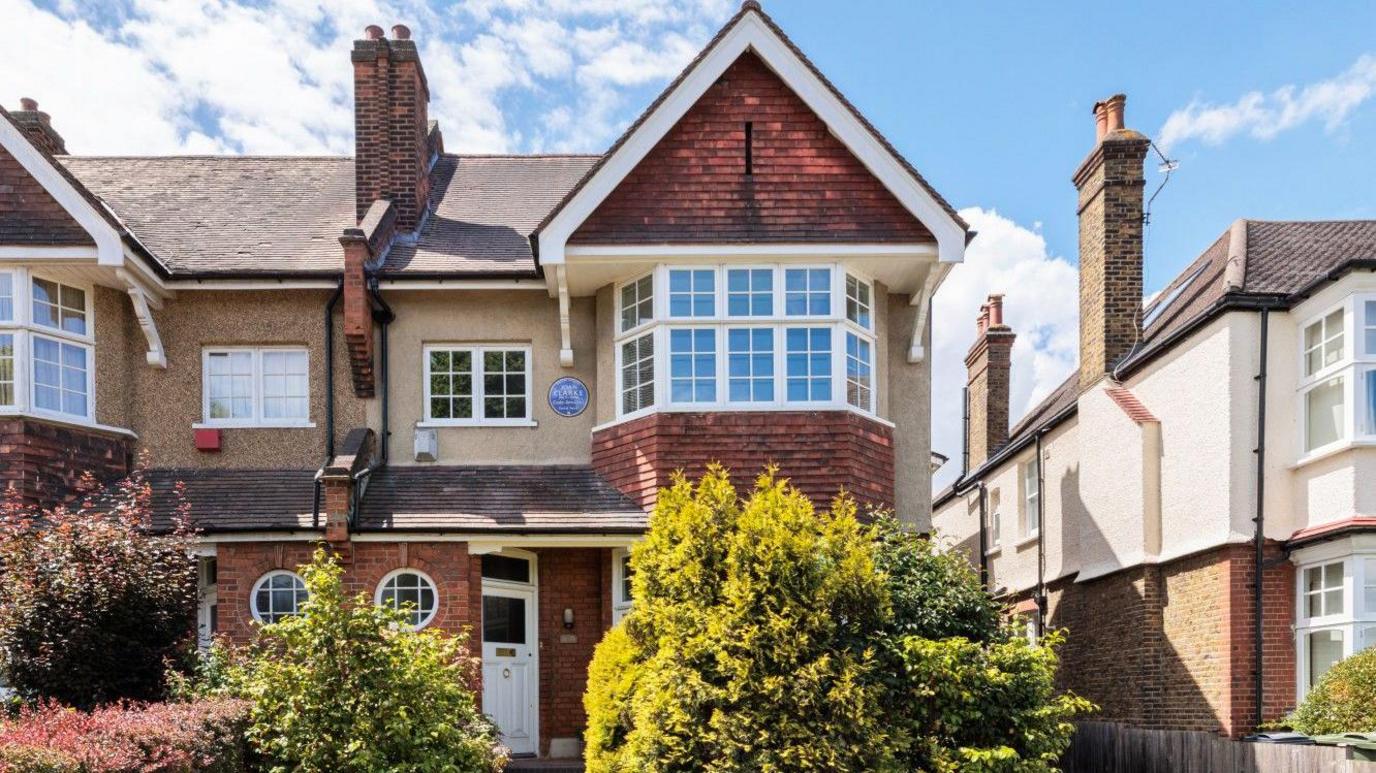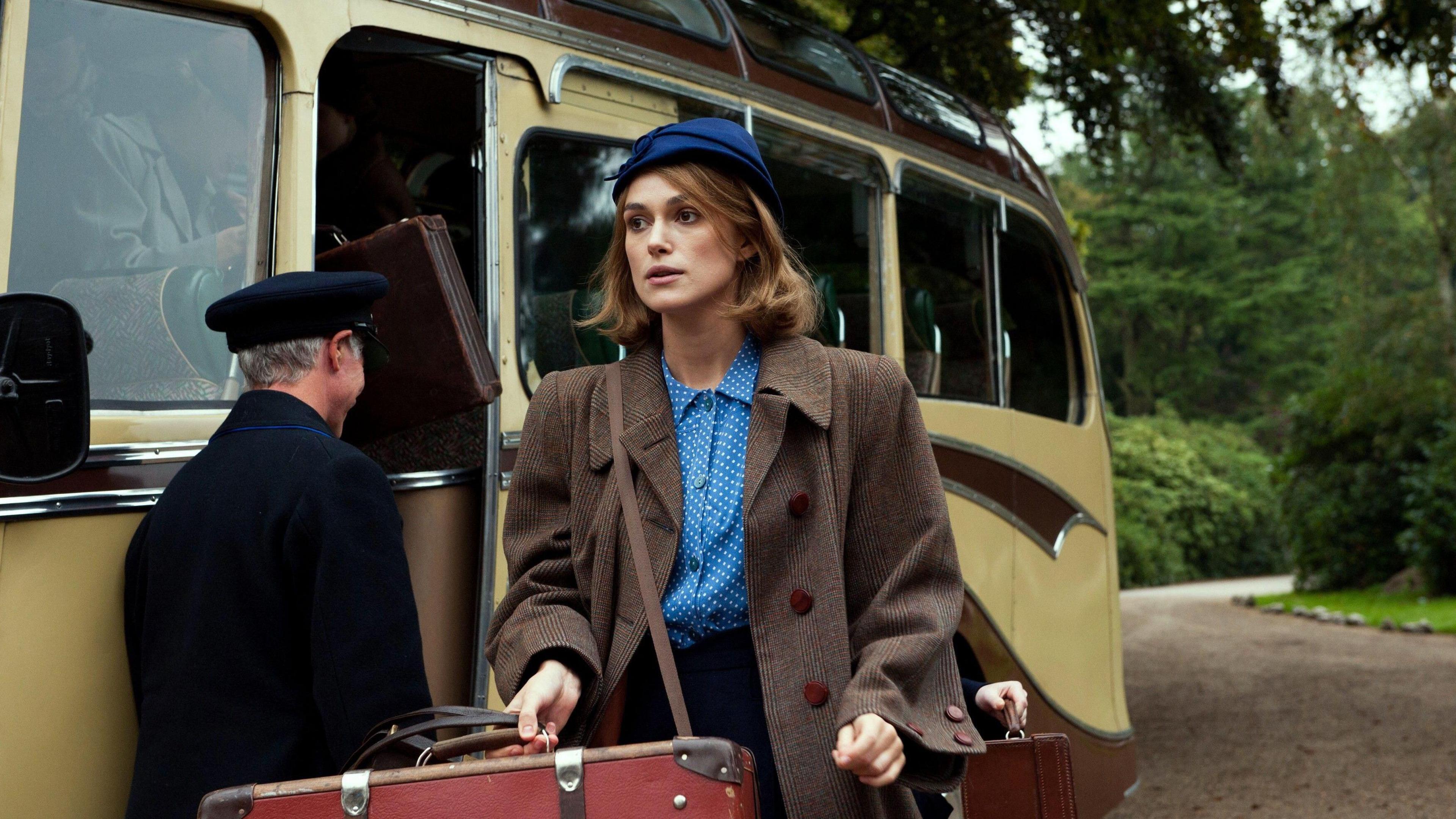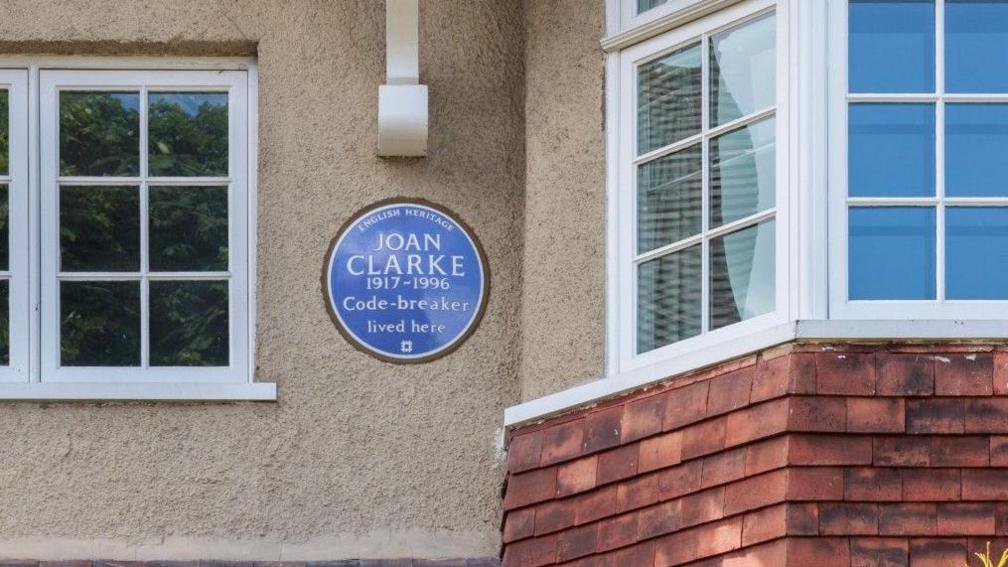WW2 code-breaker gets blue plaque at London home

Joan Clarke grew up in this house in West Dulwich
- Published
A code-breaker who played a key role in decrypting German messages during World War Two has been commemorated with a blue plaque.
Joan Clarke, who was portrayed by Keira Knightley in the 2014 film The Imitation Game, was a talented mathematician who worked alongside Alan Turing at Bletchley Park.
The plaque was installed earlier on Wednesday at her childhood home of 193 Rosendale Road in West Dulwich, south London.
Dr Susan Skedd, blue plaques historian at English Heritage, said Clarke spent her formative years at the house.
"She went from being a promising student, with a love of mathematics, to becoming a remarkable code-breaker at Bletchley Park and later at GCHQ," Dr Skedd said.
Clarke won a scholarship to study maths at Newnham College, Cambridge, in 1936.

Keira Knightley portrayed Joan Clarke in the 2014 film The Imitation Game
At Bletchley Park, the wartime headquarters of the Government Code and Cipher School, she was part of a "brilliant" team of cryptanalysts who decoded more than a million German messages, helping Allied ships to avoid U-boats, according to Dr Skedd.
Under the leadership of Turing, Clarke's Hut 8 team developed methods to read all German naval communications, enabling them to reduce the number of Allied ships destroyed by the German navy from about 100 a month to only two a month by November 1941.
The woman who cracked Enigma cyphers
- Published10 November 2014
Nazi D-Day messages revealed in tweets
- Published6 June 2019
Joan Clarke recalls Turing engagement. Video, 00:01:35
- Published10 November 2014
Clarke was personally responsible for cracking a new, tougher code used by the Germans in 1942 by deducing that their Enigma machine's new fourth rotor used the same cipher as the three-rotor system, allowing her team to continue deciphering German communications.
In the run-up to the D-Day landings, Hut 8 worked to decode the weather signals sent by the Germans and to support Allied bombing raids preparing for the invasion of 6 June 1944.
Dr Skedd said: "Eighty years ago this week, the work that so enthralled Joan would have been dramatically intensifying, as the Allied forces planned the D-Day invasions."

Clarke was the longest-serving member of Hut 8 and the most senior of the few female cryptanalysts at Bletchley Park.
She later worked at GCHQ, retiring in 1982. She died in 1996 aged 79.
The 150-year-old London blue plaques scheme celebrates the link between historical figures and the buildings in which they lived and worked.
It is run by English Heritage, which has appealed for more suggestions of notable women.
Listen to the best of BBC Radio London on Sounds and follow BBC London on Facebook, external, X, external and Instagram, external. Send your story ideas to hello.bbclondon@bbc.co.uk, external